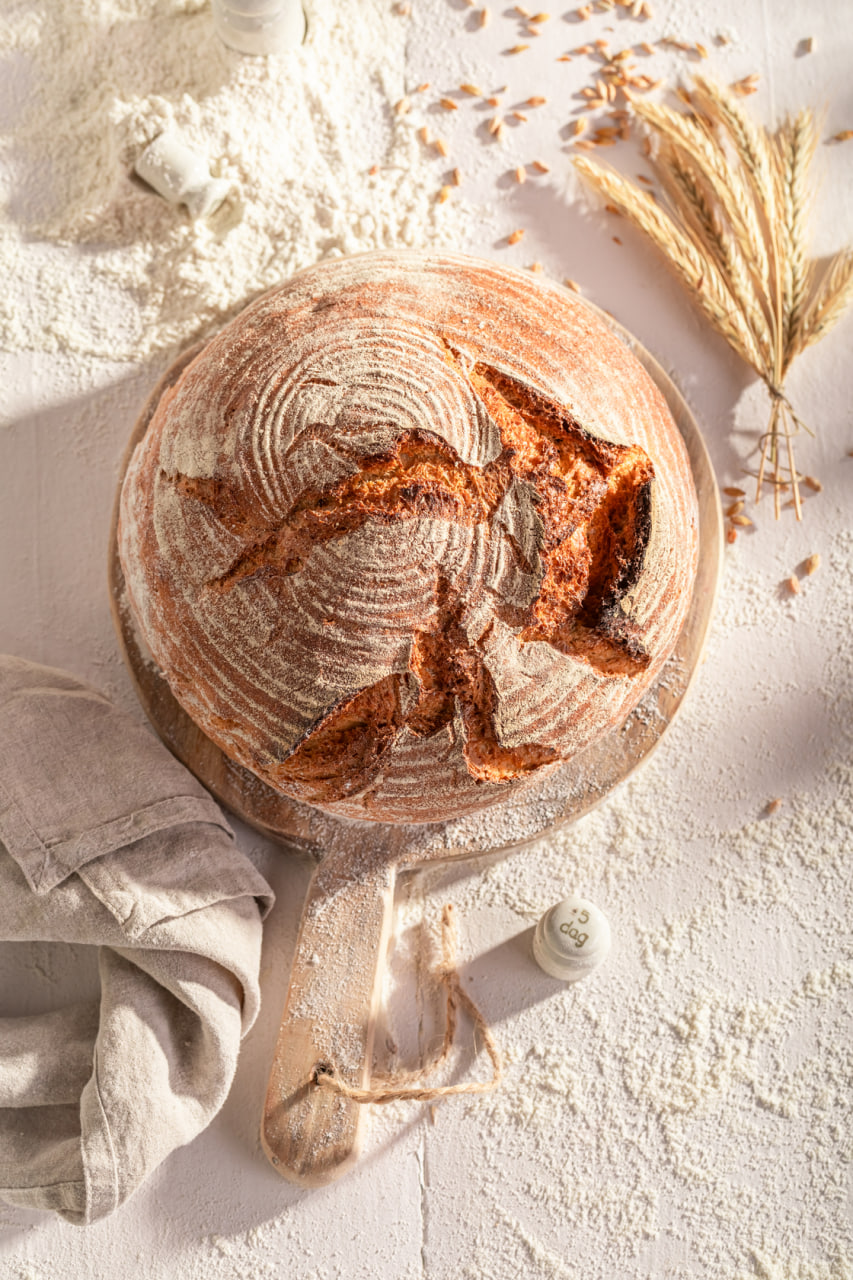Call us now:

There comes a moment in nearly every sourdough baker’s journey when the starter just doesn’t behave as expected. Maybe it stops rising, smells off, or seems to have lost its strength. It can be frustrating, especially after days or weeks of feeding and care. But the good news is that most issues with a weak or inactive starter can be reversed — often with just a few simple adjustments. The key is understanding what your starter is trying to tell you.
A healthy starter is typically predictable. After a feeding, it should rise noticeably within 4 to 6 hours at room temperature, show clear bubbles on the surface and throughout the mixture, and emit a pleasant aroma that’s tangy, mildly sweet, and slightly yeasty. If your starter is sluggish, flat, or smells unpleasant, something has disrupted its microbial balance — but that doesn’t mean it’s ruined.
One of the most common reasons a starter becomes inactive is underfeeding. When the wild yeast and bacteria consume all available sugars in the flour, they enter a state of dormancy. If left for too long, especially at room temperature, the mixture can become too acidic, which suppresses yeast activity and results in a thinner, soupy texture. In this case, increasing the frequency of feedings for a few days can help restore balance. Feeding twice daily with a strong ratio of fresh flour and clean water encourages microbial growth and allows the yeast to repopulate.
Temperature also plays a critical role. Yeast and bacteria thrive in warm environments, ideally around 75 to 80°F (24 to 27°C). If your kitchen is colder, fermentation slows significantly, leading to delayed or minimal rise. In colder climates or seasons, placing your starter in a slightly warmer spot — such as near an appliance, in an unheated oven with the light on, or inside a proofing box — can speed up activity. Just be careful not to overheat it, as temperatures above 90°F (32°C) can stress or kill the culture.
The type of flour you use matters more than many realize. Starters fed exclusively with highly processed white flour may lack some of the micronutrients wild yeast and bacteria need to thrive. Introducing small amounts of whole grain flour — such as whole wheat or rye — can dramatically boost activity. These flours are rich in minerals and natural sugars that support fermentation and encourage a more robust culture.
Water quality is another hidden factor. Chlorinated tap water can inhibit microbial growth, especially if used regularly. If your starter is weak and you suspect the water, try switching to filtered or dechlorinated water. Letting tap water sit uncovered for 24 hours before using can also allow chlorine to dissipate.
Occasionally, a starter will produce a grayish liquid on top known as “hooch.” This is a byproduct of fermentation and a sign that the starter is hungry. It’s not harmful, but it’s a clue that your feeding routine may need adjusting. Pouring off the hooch and feeding the starter more frequently usually resolves the issue quickly.
Another issue is contamination. If your starter has visible mold, strong rotten smells, or unusual colors like pink, orange, or black, it’s safest to discard it and start over. However, most problems aren’t caused by contamination but by neglect, environment, or inconsistent feeding. Reviving a tired starter is often just a matter of time, warmth, and fresh food.
If you’ve tried increasing feedings, adjusting the temperature, and tweaking the flour, and the starter is still inactive, consider a reset. Take a small portion of your starter — just a tablespoon — and begin feeding it in a clean jar with fresh flour and water, discarding the rest. This “refresh” method gives you a cleaner microbial foundation to rebuild from and often yields better results than continuing to feed a large, sluggish culture.
A weak starter can feel discouraging, especially when you’re eager to bake. But it’s important to remember that sourdough is a living system. It responds to care, environment, and rhythm. Learning to troubleshoot issues isn’t just about rescuing a jar of flour and water — it’s part of becoming a more confident and intuitive baker. With a bit of patience and the right approach, your starter can come back to life — and come back stronger.
